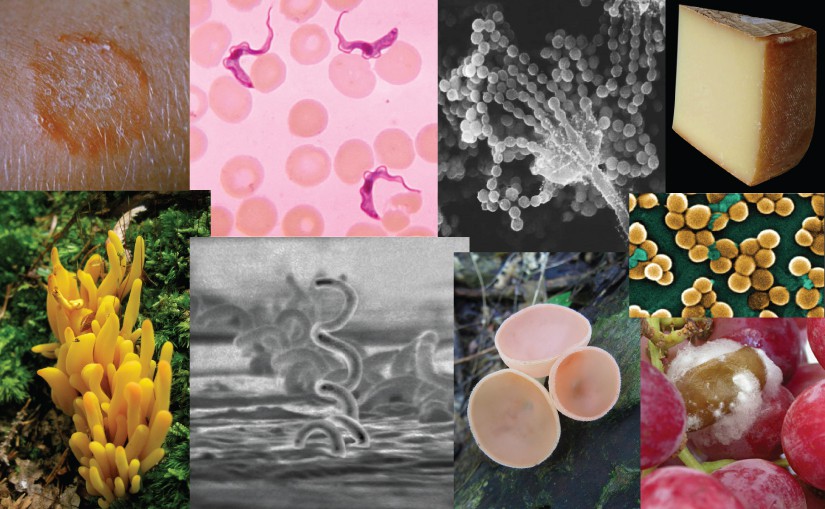Chapter 13: Introduction to Diversity of Microbes, Fungi, and Protists

Until the late twentieth century, scientists most commonly grouped living things into five kingdoms—animals, plants, fungi, protists, and bacteria—based on several criteria, such as absence or presence of a nucleus and other membrane-bound organelles, absence or presence of cell walls, multicellularity, and mode of nutrition. In the late twentieth century, the pioneering work of Carl Woese and others compared nucleotide sequences of small-subunit ribosomal RNA (SSU rRNA), which resulted in a dramatically different way to group organisms on Earth. Based on differences in the structure of cell membranes and in rRNA, Woese and his colleagues proposed that all life on Earth evolved along three lineages, called domains. The three domains are called Bacteria, Archaea, and Eukarya.
Two of the three domains—Bacteria and Archaea—are prokaryotic, meaning that they lack both a nucleus and true membrane-bound organelles. However, they are now considered, on the basis of membrane structure and rRNA, to be as different from each other as they are from the third domain, the Eukarya. Prokaryotes were the first inhabitants on Earth, perhaps appearing approximately 3.9 billion years ago. Today they are ubiquitous—inhabiting the harshest environments on the planet, from boiling hot springs to permanently frozen environments in Antarctica, as well as more benign environments such as compost heaps, soils, ocean waters, and the guts of animals (including humans). The Eukarya include the familiar kingdoms of animals, plants, and fungi. They also include a diverse group of kingdoms formerly grouped together as protists.
Search for Key Points in Chapter 13
Media Attribution
- Figure 13.1
Media Attributions
- Figure 13.1 © "ringworm": modification of work by Dr. Lucille K. Georg, CDC; "Trypanosomes": modification of work by Dr. Myron G. Schultz, CDC; "tree mold": modification of work by Janice Haney Carr, Robert Simmons, CDC; "coral fungus": modification of work by Cory Zanker; "bacterium": modification of work by Dr. David Cox, CDC; "cup fungus": modification of work by "icelight"/Flickr; "MRSA": modification of work by Janice Haney Carr, CDC; "moldy grapefruit": modification of work by Joseph Smilanick; OpenStax is licensed under a CC BY (Attribution) license

